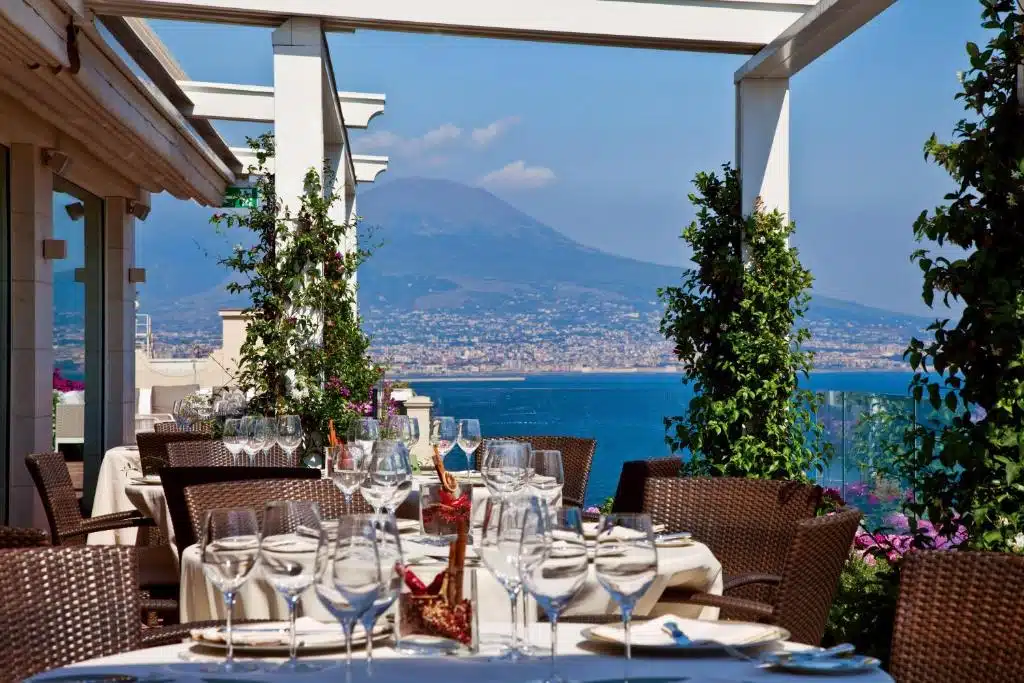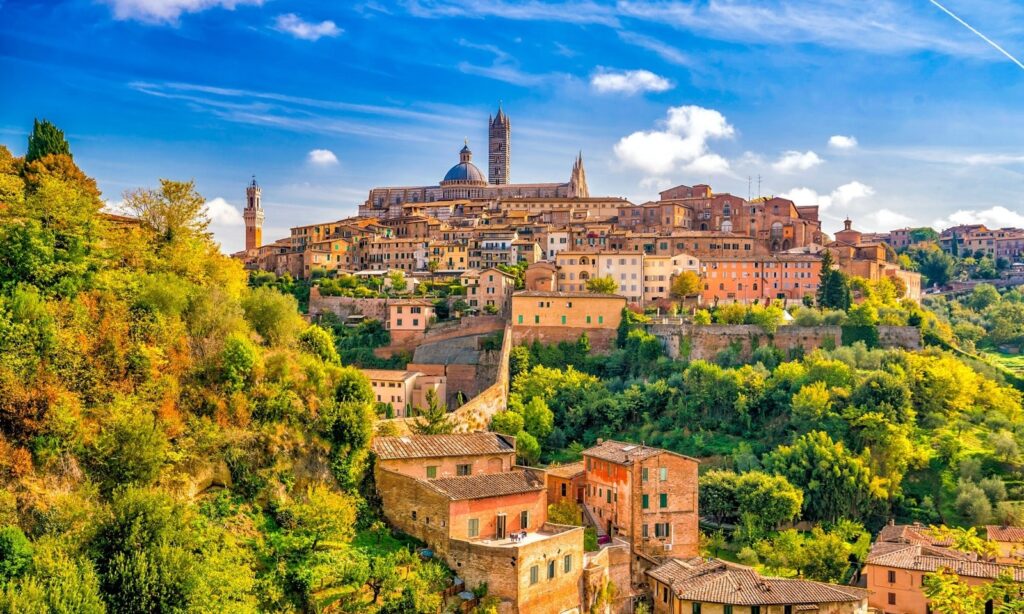Our Milan Guide will introduce you to the city, its culture, sights, history, etc. Not just that, we will also share with you some helpful tips on when to go, where to go, and when to stay. So, if you are interested, be sure to stick around.

©visititaly.eu
Our Milan Guide – Short Introduction
Known as the fashion capital of Italy, Milan is not just renowned for its stylish boutiques and impressive architecture. The city also boasts a solid culinary heritage deeply rooted in tradition and history.
People who know Italy will tell you to skip Milan. People who know Italy well will tell you that whatever you do, attend Milan. Granted, competing with the world’s Romes, Venices, and Florences can be challenging, but underestimating Milan is a rookie move. It is Italy’s media, fashion, financial, and design center. In other words, it’s one of the few places in the country driven by something other than tourism. That means excellent restaurants, cutting-edge art galleries, and fashion and design boutiques that are heavy on quality and light on tourists.
It’s also heavy on masterpieces. Da Vinci’s The Last Supper, the Gothic Duomo Cathedral, and La Scala, one of the world’s most significant opera houses, are all here. This being a city driven by locals, there are ample ways to get off the beaten path—quaint neighborhoods, like Brera, with its cobblestoned streets made for an evening passeggiata come to mind. And, of course, we are in Italy, so the food rightly takes center stage. (If you remember nothing else, remember that anything served “alla Milanese” is a step in the right direction.)
Milan is an Italian anomaly, equally threaded with the hypermodern and the wonderfully old. And like the masterpieces it claims, Milan has excellent stories to tell and beauty to share. It’s just a matter of knowing where to look.
Top Things to See and Do in Milan
Take a walk in the historic center.
The city has a lot to offer that is worth to be discovered. During a walk, you will see all the essential highlights of Milan: the castle built by the Sforza family, the Duomo and its beautiful architecture and stained glass, the Galleria Vittoria Emanuele II, the Teatro alla Scala where the famous composer Giuseppe Verdi worked for an extended period and the Quadrilatero, the heart of Milans’ fashion culture where internationally renowned fashion designers have their shops and the romantic Brera area.
In the 13th Century, Milan was one of the biggest cities in Europe, and it has developed since then.
Tip: Tickets to view The Last Supper are limited to 18 people every 15 minutes, so they sell out quickly. Check if you’re buying tickets, including the painting or the Santa Maria Delle Grazie entrance. The cost starts at 15 €, and booking online well in advance or considering a guided tour is best. Ultimately, click on the following link to see the most valuable deals.
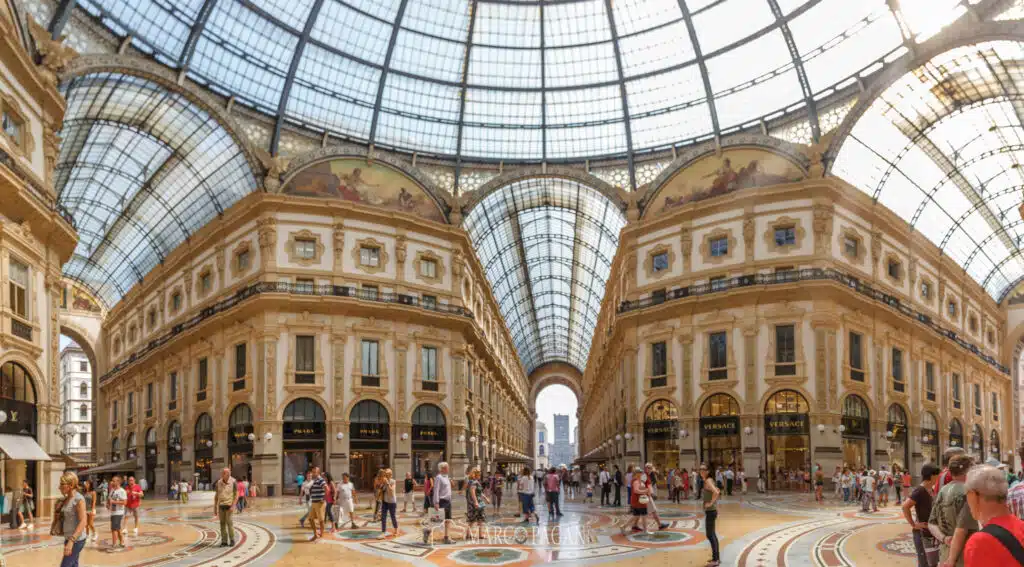
©Marco Pagani/Wikipedia
Shopping in the fashion capital
In our Milan Guide, we will also talk about the shopping experience. You already know that this fashion city is where to go for extensive shopping. If budget is not an issue, visit the Quadrilatero d’Oro (the Golden Quadrangle) with top designers and brands. You can find vintage items and more special boutiques in the Brera district. For regular prices, the big chains in the streets around the Duomo are a great place to shop. Also, the fashion outlets just outside Milan are worth a visit. There are several to choose from, and you can reach them with your transport or with a bus that shuttles between the center and the outlet.
AC Milan’s San Siro Stadium
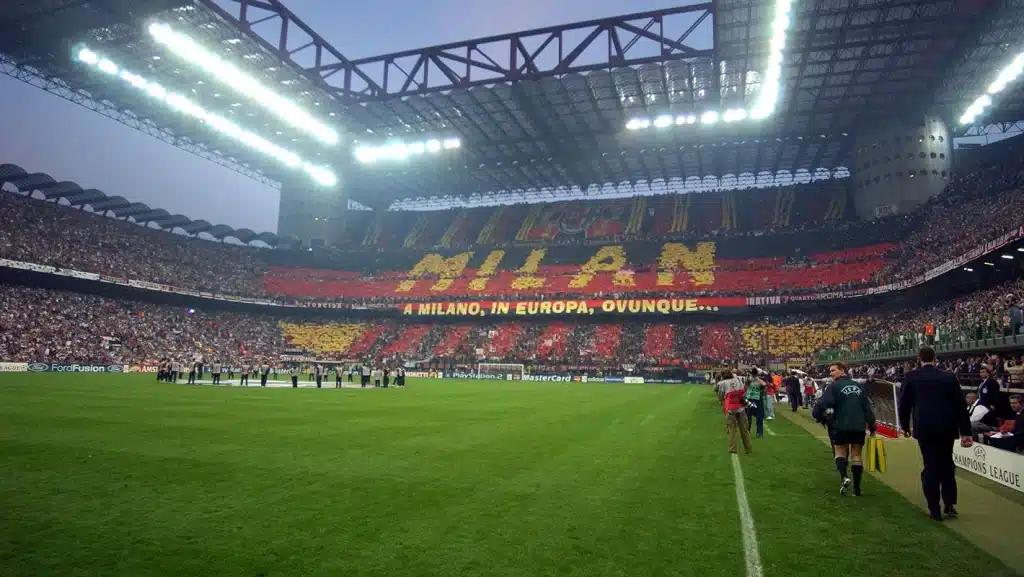
©acmilan.com
Watch some football
If you’re a football (soccer) fan, book tickets to a match at San Siro Stadium. Milan is home to two of the world’s best football teams: AC Milan and Inter Milan. Games are super lively and a great way to connect with locals. With a capacity of 80,000 spectators, this is the largest stadium in Italy and where the 2026 Winter Olympics opening ceremony will occur. Tickets start at 20-30 EUR. When matches aren’t happening, you can take a guided tour of the stadium and visit the museum for 30 EUR.
Cotoletta alla Milanese – One of the most famous dishes here

©sanpellegrino.com
Try some local food.
In addition to the specific specialties, two things make the food of Milan different from most Italian cuisines.
First, traditional Milanese cuisine, like French Cuisine, uses a lot of butter. The Milanese still use olive oil, but they cook with way more butter than is the norm in most other parts of Italy.
Second, there is more risotto and polenta than pasta on Milanese menus. When you think of Italian food, you assume it is pasta, right? But risotto and polenta are even more prevalent in Milan cuisine than pasta!
- Risotto alla Milanese—This special saffron-infused rice dish originated in the city during the Renaissance period. Today, it’s a staple on menus not only in Milan but also in Italian restaurants around the globe.
- Ossobuco—Another famous Milanese food, Ossobuco, or Osso Buco, translates to “bone with a hole.” This traditional Milanese dish is made from cross-cut veal shanks and served on the bone. Therefore, it is a must-eat in Milan.
- Cotoletta alla Milanese is a thick, fried veal cutlet and needs, we say, delicious. History has recorded centuries of fights between the Austrians and Italians over who first invented this classic dish (in Austria, the wiener schnitzel is nearly the same). Still, whatever the case, a cotoletta is now a Milanese staple!
- Polenta is a hearty, stick-to-your-bones cornmeal dish served as a second course topped with anything from a hearty meat stew to cheese to vegetables or as a simple side dish. Polenta derives from the area’s cucina povera, or homemade cooking with poor, simple ingredients, but it is still beloved today. Popular polenta recipes include adding meat ragù, sausage, mushrooms, gorgonzola, or butter.
Do one-day trips from Milan
Thanks to its prime location in northern Italy’s central region, Milan is a fantastic base for a day trip. This Milan Guide will reveal the city’s most memorable day trips. Whether you’re discovering the rolling Swiss and Italian Alps or the stunning lakes nearby, you can extend your stay in Milan by adding an unforgettable day trip.
Thanks to the country’s nifty transport system, traveling by train in Italy means the best day trips from Milan are easy and affordable. So, prepare for unforgettable experiences, from lovely seaside resorts like Portofino to mesmerizing lakes like Lake Como or a food-inspired visit to Bologna.
Notes:
- If you’d like to learn more about the best one-day trips from Milan, we suggest reading our related article.
- If you are a skier, we recommend skiing in nearby resorts, such as Cervinia or Zermatt, in neighboring Switzerland.
Our website includes affiliate links. So, keep in mind that we may receive commissions when you click our links and make purchases. Please read our legal disclaimer document for more information about our Affiliate disclaimer and other disclaimers like Fair-Use disclaimer, etc.
How to get to Milan
From the airport to the hotel in Milan
There are three possible Milan airports you can fly into when flying to Milan. International Airport Malpensa (MXP) is 50 kilometers northwest of Milan and is the largest airport. Airport Linate (LIN) is a smaller airport located 8 kilometers east of Milan. Finally, there is Milan-Bergamo (BGY). This airport is located 50 kilometers west of Milan near Bergamo. It is often the destination for cheaper and budget airlines.
By bus: The cheapest option to travel from Milan airport to the city center. Buses usually run very frequently. A single journey costs 5 euros (depending on the airport), and you can easily book tickets in advance (book your tickets online).
By train: Every half hour, the Malpensa Express leaves from Malpensa airport and goes towards Milan Cardona or Milan Central stations. At the last destination, you can also quickly transfer to a metro at the Garibaldi stop. The journey takes about 50 minutes, and a single train journey costs 15 euros and 8 for children. Traveling from Bergamo airport to the city center is complicated, and the Linate Airport needs a train connection.
By taxi: A taxi is an affordable option from Linate airport. A taxi ride from Bergamo airport will cost you 80 euros. However, taxi costs from Malpensa Airport are usually above 95 euros, so we don’t recommend this option.
Milan City Pass
The Malpensa Shuttle is one of the best ways to reach the city from Malpensa Terminal 1 and Terminal 2. It departs from Milan Central Station every 20 minutes and serves terminals 1 and 2 of Malpensa Airport (and vice versa). Milan City Pass + Malpensa Shuttle: This combo is a good solution for visiting Milan quickly. The Card is available for one day or three days and allows free access to the entire public transport network, free access or discounted rates for museums, tours, and more, as well as Malpensa Shuttle One Way. Similar combinations are possible for Bergamo Airport and Linate Airport.
Note: We advise you to purchase these passes in advance. If you are interested in buying them, click on this link.
How to get around in Milan
Public transport in Milan is quite efficient, is relatively cheap and runs until late. However, if you stay in the center, you’ll only use it to get to the airport.
- Metro—Despite the Milan Metro having only four lines and 111 stations, it’s currently the longest metro line in Italy, measuring 58.7 miles—94.5 km. It surpasses the metro in Rome, which only consists of three lines.
- Trams in Milan—The Milan tram network system has 18 lines running until midnight. The trams in Milan have longer schedules than the Milan Metro and the city’s local buses. They are numbered from 1 to 33.
- Local buses in Milan – Milan has over 80 local bus lines and a few trolley bus lines (electric buses run with overhead wires). Since the city’s metro network is so limited, Milan’s urban buses are one of the best ways to get around.
- Taxis – Milan is a relatively small city with an efficient and extensive public transport system. Moreover, if you stay in the city center, you can walk to most of the city’s attractions on foot. Nevertheless, reading about Milan’s taxis is always helpful as you can take one during your stay in Milan.
Note: Unlike most European cities, Milan taxis rarely stop when someone hails them in the street. To catch a cab, you’ll need to walk to the nearest taxi stop or call to book one in advance.
- Milan Transport Tickets and Travel Cards – All the tickets and travel cards are valid for Milan’s means of transport: urban buses, trams, Milan Metro, and urban trains. You can purchase transport tickets in the various metro stations, off-licenses, and any of Milan’s parking meters. As well as the already mentioned tickets, Milan’s public transport system also has weekly, monthly, and annual travel cards. These cards are not valid for tourists unless you plan to stay in Milan for over a week, as the Card costs € 10. You can buy a Milano City pass card here.
When to Go to Milan
The summer months (June to August) are sunny and hot, with daily averages hovering around 29°C. It is the most popular time to visit, so the city is lively. Still, it’s also busy, so book your accommodation in advance.
The shoulder seasons, from April to May and September to October, are the best times to visit Milan. You’ll avoid peak tourism season, and the weather is still warm. The average temperature in May is 22°C, while in October, it’s 18°C.
Temperatures cool off considerably from November to March, with lots of fog. It’s much quieter in Milan during these months. Expect daily highs around 7°C.
Suppose your most significant reason for visiting Milan is its shopping and fashion. In that case, Fashion Week takes place twice a year (autumn/winter and spring/summer) and is a big deal. I have never been, as it’s not my thing, but the celebrations are legendary. You need to book accommodations far in advance as the city fills up during this time, and everything becomes much more expensive.
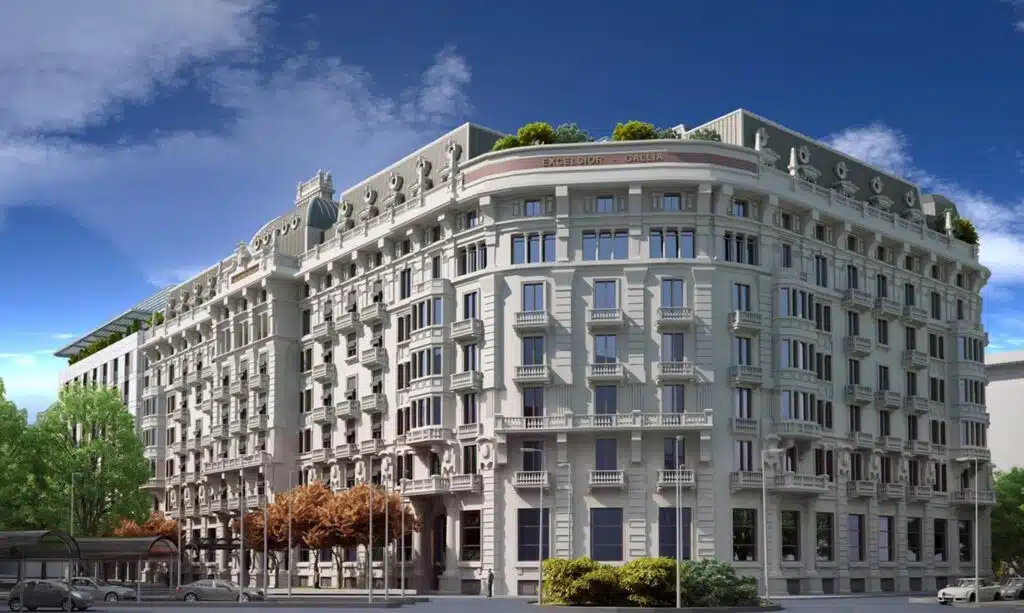
© Business Wire
Where to Stay in Milan
This is one of the most important subjects when going on vacation, so the Milan Guide will include one further article dedicated to the best areas to stay.
Although Milan hotel prices are lower than in Rome or Venice, they are still relatively expensive. Nevertheless, if you book in advance, you can find good deals in mid-range centrally located hotels.
Most of the town’s tourist attractions and museums are in the city center or very close to it, so we recommend looking for a hotel near Milan Cathedral or La Scala.
The city center is between the following metro stations: Missori, Castello, Montenapoleone, and San Babila.
If centrally located hotels are too expensive and you prefer to stay a little further out, ensure the hotel is close to a metro station to quickly reach the historic center, where most of Milan’s landmarks are.
Note: If you are looking for suitable accommodations, find valuable deals here.
Note: If you’d like to learn more about the areas where you should stay in Milan, please read our related article.
Stay Safe in Milan
Milan is a safe place to backpack and travel, as violent crime is rare. Pickpocketing is the most common crime you’ll face, so you should be vigilant around Central Station and the area around the Piazza Duca D’Aosta. Avoid Parco Sempione at night, especially if you’re alone. The same goes for the Arc of Peace. Always keep your valuables secure and out of sight to be safe (especially on public transportation).
Scams here are rare, but if you’re worried about getting ripped off, you can read about common travel scams to avoid here.
Milan Guide: Money-Saving Tips
Firstly, it is one of the most expensive cities in Italy, so there are better places to save money. However, it’s not impossible either. Here are some ways to save money in Milan so you don’t break the bank:
- Don’t eat near Milano Centrale railway station. The restaurants around here are tourist traps and considerably overpriced. Head a few blocks outside this area for authentic and less pricey food.
- Avoid taxis—Taxis are costly. If you’re on a budget, stick to public transportation.
- Do some affordable shopping – If you don’t want to miss out on the fashion adventure, head to the Brera District for less expensive but trendy boutique shops.
- Get a city pass—If you do a lot of sightseeing, the Milan City Pass can give you discounts or free entry to the top museums, tours, and attractions.
- Skip the bread—Some restaurants charge extra for bread or breadsticks on the table but will tell you about it when the bill comes. If you’re on a tight budget, decline the bread.
- Stay with a local—Couchsurfing is the best way to make a local friend and get a free place! It is also the best way to save money and connect with a local who can share their insider tips. Just remember to send your requests early.
- Bring a water bottle – The tap water here is safe to drink, so bring a reusable water bottle to save money and reduce your plastic use. LifeStraw is my go-to brand, as their bottles have built-in filters to ensure your water is always clean and safe.
Final wordings
That is all for now in this Milan Guide. It is known for fashion, design, banking, and finance, but it also offers historical and artistic treasures. It’s a vibrant city with a thriving cultural scene and great shopping. Let us know how it compares to popular tourist destinations like Rome, Florence, or Venice.
Take a look at
References and sources:
Photo credits:
Feature picture credits: Getty Images/iStockphoto





